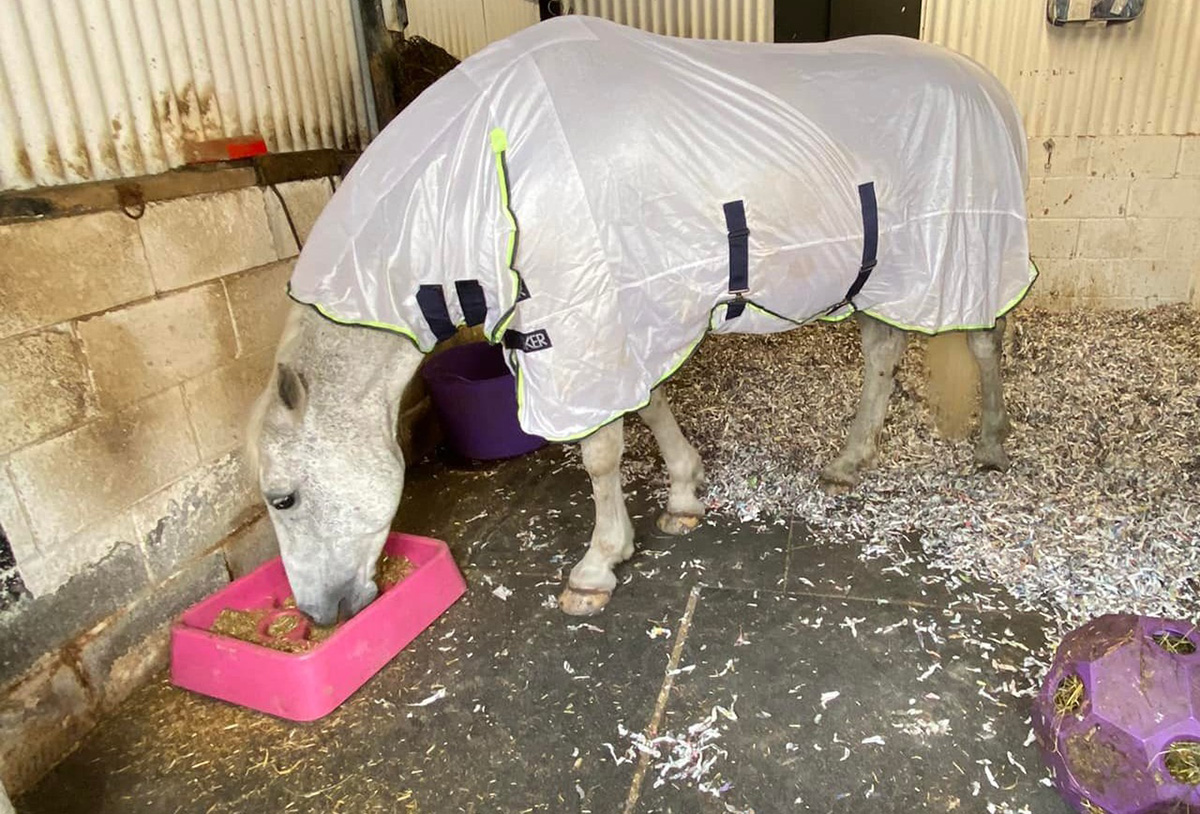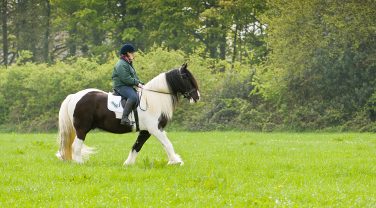Millie’s Gastric Ulcer Journey
There is a common misconception that most horses suffering from gastric ulcers are high-level competition horses, hot-blooded types or poor doers that don’t hold their weight well. However, there are actually many leisure horses that also suffer from gastric ulcers and a recent study from Belgium showed that only half of those with ulcers were underweight.
Meet my horse Millie, a 15.2hh Irish Sports Horse, who is a typical good doer – she holds her weight well (sometimes too well!), is in light work and although she can be stressy at times, isn’t your typical gastric ulcer candidate.
Millie was first scoped in August 2023, and she was diagnosed with both squamous & glandular gastric ulcers in varying degrees of severity. My vet started with intra-muscular omeprazole injections alongside oral sucralfate for 4 weeks, followed by a re-scope and oral omeprazole for a further month alongside the sucralfate until her gastric ulcers had improved.

Millie’s diet has always been fibre-based, consisting of Dengie Hi-Fi Lite, a vitamin & mineral supplement and at least 1.5% of her bodyweight (dry matter) per day in soaked hay & grazing.
In an ideal situation, we would like to provide ad-lib/free access hay and grazing for a horse with gastric ulcers. However, for a good-doer like Millie, this would, be detrimental to her health putting her at a high risk of obesity and therefore greater risk of laminitis. A middle ground was established, providing sufficient fibre for gut health while also making sure calories were kept low. Originally, I planned to slowly add some straw into Millie’s hay to bulk it out, providing her with more forage to chew but still keeping the calorie content lower than if she had free access to hay. However, being short of space at my yard and unable to store multiple bales of straw, I decided it would be more practical to increase her Hi-Fi Lite and use it as a partial forage replacer instead. Hi-Fi Lite is lower in calories than the average hay at only 7.5 MJ/Kg, as well as being low in sugar so it is ideal for Millie.
Originally, Millie had been fed two handfuls of the Hi-Fi Lite in her twice-daily feed to act as a carrier for her vitamins and minerals. I slowly increased the quantity fed to 3kg per day, gradually increasing the amount every 2-3 days for a few weeks.

We split her daily hay ration into multiple small-holed nets which we soaked and hung up in different places around the stable to increase movement and the time it took for her to finish them. We also gave Millie the Hi-Fi Lite in a slow feeder which helped to increase chew time and saliva production. Saliva is important in horses, as it contains natural bicarbonates which buffer acid which is particularly important for the squamous area of the stomach where gastric ulceration is most common.
Millie is also fed a double handful of Hi-Fi Lite 20-25 minutes before she does any exercise, as this helps to prevent “acid splash” in the non-glandular region of her stomach. A chopped fibre feed, such as Hi-Fi Lite, creates a fibre mat on top of the acidic contents of her stomach, suppressing the movement of the acid when she works. The inclusion of alfalfa in Dengie Hi-Fi Lite also helps with acid buffering due to its high levels of calcium.

We now make sure Millie has at least one day off after two days of exercise. Glandular ulcers are not thought to be linked to nutrition unlike squamous gastric ulcers do, but it is understood they have more of a relationship with stress, such as from exercise and daily management. By doing all that I can to reduce stress, the likelihood of her ulcers reoccurring is lower. Millie may never be a cuddly horse as that just isn’t her nature, but she is back to being cheeky and enjoying hacking out again which makes me happy!
For more information about Dengie’s feeds or for help and advice on all aspects of feeding call the Dengie Feedline: 01621 841188 or complete our Feed Advice Form.


